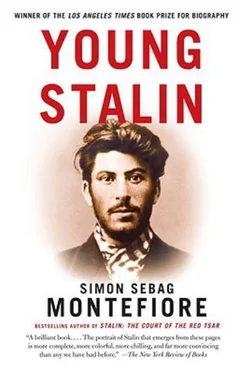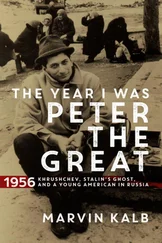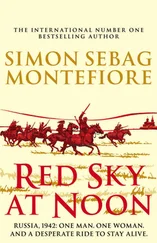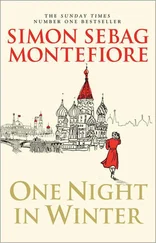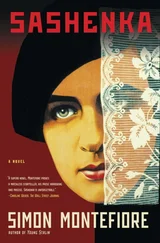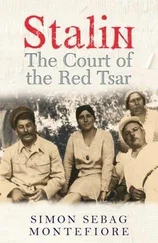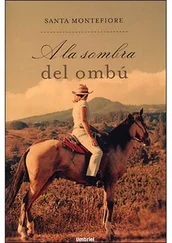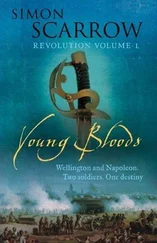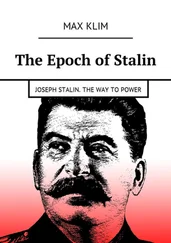“The functions of each of us had been planned in advance,” remembered a third girl in the gang, Alexandra Darakhvelidze, just nineteen, a friend of Anneta, and already veteran of a spree of heists and shootouts.
The gangsters each covered the square’s policemen—the gorodovoi , known in the streets as pharaohs . Two gunmen marked the Cossacks outside the City Hall; the rest made their way to the corner of Velyaminov Street and the Armenian Bazaar, not far from the State Bank itself. Alexandra Darakhvelidze, in her unpublished memoirs, recalled guarding one of the street corners with two gunmen.
Now Bachua Kupriashvili, nonchalantly pretending to read a newspaper, spotted in the distance the cloud of dust thrown up by the horses’ hooves. They were coming! Bachua rolled up his newspaper, poised…
The cavalry captain with the flashing sabre, who had been promenading the square, now warned passers-by to stay out of it, but when no one paid any attention he jumped back onto his fine horse. He was no officer but the ideal of the Georgian beau sabreur and outlaw, half-knight, half-bandit. This was Kamo, aged twenty-five, boss of the Outfit and, as Stalin put it, “a master of disguise” who could pass for a rich prince or a peasant laundrywoman. He moved stiffly, his half-blind left eye squinting and rolling: one of his own bombs had exploded in his face just weeks before. He was still recuperating.
Kamo “was completely enthralled” by Stalin, who had converted him to Marxism. They had grown up together in the violent town of Gori forty-five miles away. He was a bank robber of ingenious audacity, a Houdini of prison-escapes, a credulous simpleton—and a half-insane practitioner of psychopathic violence. Intensely, eerily tranquil with a weird “lustreless face” and a blank gaze, he was keen to serve his master, often begging Stalin: “Let me kill him for you!” No deed of macabre horror or courageous flamboyance was beyond him: he later plunged his hand into a man’s chest and cut out his heart.
Throughout his life, Stalin’s detached magnetism would attract, and win the devotion of, amoral, unbounded psychopaths. His boyhood henchman Kamo and these gangsters were the first in a long line. “Those young men followed Stalin selflessly… Their admiration for him allowed him to impose on them his iron discipline.” {4} Kamo often visited Stalin’s home, where he had earlier borrowed Kato’s father’s sabre, explaining that he was “going to play an officer of the Cossacks.” {5} Even Lenin, that fastidious lawyer, raised as a nobleman, was fascinated by the daredevil Kamo, whom he called his “Caucasian bandit.” “Kamo,” mused Stalin in old age, “was a truly amazing person.” {6}
“Captain” Kamo turned his horse towards the boulevard and trotted audaciously right past the advancing convoy, coming the other way. Once the shooting started, he boasted, the whole thing “would be over in three minutes.”
The Cossacks galloped into Yerevan Square, two in front, two behind and another alongside the two carriages. Through the dust, the gangsters could make out that the stagecoach contained two men in frockcoats—the State Bank’s cashier Kurdyumov and accountant Golovnya—and two soldiers with rifles cocked, while a second phaeton was packed with police and soldiers. In the thunder of hooves, it took just seconds for the carriages and horsemen to cross the square ready to turn into Sololaki Street, where stood the new State Bank: the statues of lions and gods over its door represented the surging prosperity of Russian capitalism. [2]
Bachua lowered his newspaper, giving the sign, then tossed it aside, reaching for his weapons. The gangsters drew out what they nicknamed their “apples”—powerful grenades which had been smuggled into Tiflis by the girls Anneta and Alexandra, hidden inside a big sofa.
The gunmen and the girls stepped forward, pulled the fuses and tossed four grenades which exploded under the carriages with a deafening noise and an infernal force that disembowelled horses and tore men to pieces, spattering the cobbles with innards and blood. The brigands drew their Mauser and Browning pistols and opened fire on the Cossacks and police around the square who, caught totally unawares, fell wounded or ran for cover. More than ten bombs exploded. Witnesses thought they rained from every direction, even the rooftops: it was later said that Stalin had thrown the first bomb from the roof of Prince Sumbatov’s mansion.
The bank’s carriages stopped. Screaming passers-by scrambled for cover. Some thought it was an earthquake: was Holy Mountain falling on to the city? “No one could tell if the terrible shooting was the boom of cannons or explosion of bombs,” reported the Georgian newspaper Isari (Arrow). “The sound caused panic everywhere… almost across the whole city, people started running. Carriages and carts were galloping away…” Chimneys had toppled from buildings; every pane of glass was shattered as far as the Viceroy’s Palace.
Kato Svanidze was standing on her nearby balcony tending Stalin’s baby with her family, “when all of a sudden we heard the sound of bombs,” recalled her sister, Sashiko. “Terrified, we rushed into the house.” Outside, amid the yellow smoke and the wild chaos, among the bodies of horses and mutilated limbs of men, something had gone wrong.
One horse attached to the front carriage twitched, then jerked back to life. Just as the gangsters ran to seize the money-bags in the back of the carriage, the horse reared up out of the mayhem and bolted down the hill towards the Soldiers Bazaar, disappearing with the money that Stalin had promised Lenin for the Revolution. {7}
During the ensuing century, Stalin’s role that day was suspected yet unprovable. But now the archives in Moscow and Tbilisi show how he masterminded the operation and groomed his “inside-men” within the Bank over many months. The unpublished memoirs of his sister-in-law Sashiko Svanidze, in the Georgian archives, record Stalin openly acknowledging that he presided over the operation. [3]A century after the heist, it is now possible to reveal the truth.
Stalin revelled in the “dirty business of politics,” the conspiratorial drama of revolution. When he was dictator of Soviet Russia, he referred enigmatically, even nostalgically, to those games of “Cossacks and bandits”— kazaki i razboyniki , the Russian version of “cops and robbers”—but never gave details that might undermine his credentials as a statesman. {8}
The Stalin of 1907 was a small, wiry, mysterious man of many aliases, usually dressed in a red satin shirt, grey coat and his trademark black fedora. Sometimes he favoured a traditional Georgian chokha , and he liked to sport a white Caucasian hood, draped dashingly over his shoulder. Always on the move, often on the run, he used the many uniforms of Tsarist society as his disguises, and frequently escaped manhunts by dressing in drag.
Attractive to women, often singing Georgian melodies and declaiming poetry, he was charismatic and humorous, yet profoundly morose, an odd Georgian with a northern coldness. His “burning” eyes were honey-flecked when friendly, yellow when angry. He had not yet settled on the moustache and hair en brosse of his prime: he sometimes grew a full beard and long hair, still with the auburn tinge of his youth, now darkening. Freckled and pockmarked, he walked fast but crookedly, and held his left arm stiffly, after a spate of childhood accidents and illnesses.
Indefatigable in action, he bubbled with ideas and ingenuity. Inspired by a hunger for learning and an instinct to teach, he feverishly studied novels and history, but his love of letters was always overwhelmed by his drive to command and dominate, to vanquish enemies and avenge slights. Patient, calm and modest, he could also be vainglorious, pushy and thin-skinned, with outbursts of viciousness just a short fuse away.
Читать дальше
